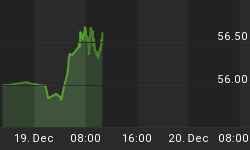The euro zone is under pressure again. A decline of eur/usd to 1.28/1.26 is still in the cards. What could happen to the U.S. markets?
Europe is challenged.
After few months of apparent calmness, markets are again concerned that the debt challenge of the southern European states will worsen. In particular, Spain is under the lens, as the spread of ten-year yield sits just below 6%. The country will face euro 305 billion in maturing debt over the next three years. It has to pay euro 64 billion for the interests. Finally, the financial budget could explode, especially in the autonomous regions. The EFSF/ESM stability package will not be enough to cover the costs. E.C.B. bond buying could instead help short-term. However, there are concerns over the quality of the financial instruments that are traded.
The next coming weeks could be critical. Markets are testing Europe capacity to handle another risk of contagion. The spreads in the peripheral countries might be under pressure again. Eur/usd could challenge the important support line at 1.30 and eventually decline to 1.28/1.26. In fact, the economic picture is worse than expected. So, the E.C.B. will keep the accommodative monetary policy for a longer-time. Rates will be cut again, if necessary. The liquidity issue might have been mitigated in Europe. However, solvency challenges can be resolved only by the local governments. Austerity measures are expected, as well as structural reforms. Unity is essential among member states. Practicing the fiscal compact (keeping numbers in order) will only be the first step.
U.S.: Exports are positive for now.
Europe sliding deeply into recession does not seem to affect U.S. exporters. Year-on-year exports to the euro zone were up 5.7% in February, increasing from + 2.8% in 2011. Business with France and Germany jumped 8.9% and 8.4%, while it slumped more than 14% with Spain. Global economies are pausing. In China, the government aims to cut growth to 7.5% from the current 8.1%. It was 8.9% in the last part of 2011. Nonetheless, the Chinese central bank should continue to mildly ease lending conditions. Exports remain the cornerstone of the economy, but China is trying to improve internal demand as well.
What will happen to the U.S. markets? The S&P 500 could fall to 1340/1320 over the short/medium term. In the past, the period between May-September has not been very favourable for the economy. Growth could be around 2.0% this year. Household demand is tepid. Wages are subdued. March payroll increased only 120,000. Most importantly, the report showed a decline in the length of the workweek and in temporary hiring. It might anticipate a period of stabilization, after the positive momentum of the past months. Inflation could slow down as well. Import prices have decelerated. Core consumer prices were up 2.30% in March, following February 2.20%.
















